Alison Pease
University of Edinburgh
Explainable Computational Creativity
May 11, 2022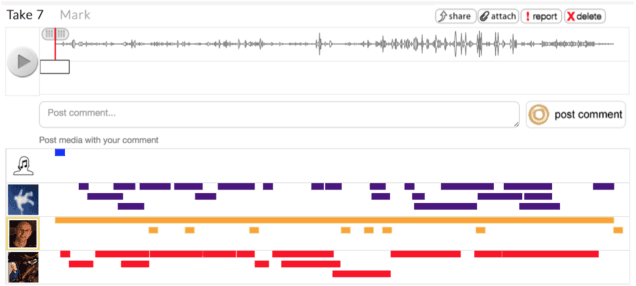

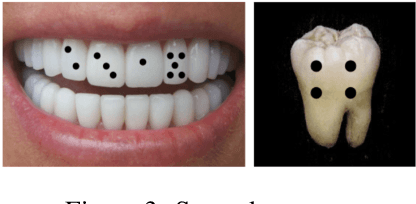

Abstract:Human collaboration with systems within the Computational Creativity (CC) field is often restricted to shallow interactions, where the creative processes, of systems and humans alike, are carried out in isolation, without any (or little) intervention from the user, and without any discussion about how the unfolding decisions are taking place. Fruitful co-creation requires a sustained ongoing interaction that can include discussions of ideas, comparisons to previous/other works, incremental improvements and revisions, etc. For these interactions, communication is an intrinsic factor. This means giving a voice to CC systems and enabling two-way communication channels between them and their users so that they can: explain their processes and decisions, support their ideas so that these are given serious consideration by their creative collaborators, and learn from these discussions to further improve their creative processes. For this, we propose a set of design principles for CC systems that aim at supporting greater co-creation and collaboration with their human collaborators.
Is Two Better than One? Effects of Multiple Agents on User Persuasion
Apr 10, 2019



Abstract:Virtual humans need to be persuasive in order to promote behaviour change in human users. While several studies have focused on understanding the numerous aspects that influence the degree of persuasion, most of them are limited to dyadic interactions. In this paper, we present an evaluation study focused on understanding the effects of multiple agents on user's persuasion. Along with gender and status (authoritative & peer), we also look at type of focus employed by the agent i.e., user-directed where the agent aims to persuade by addressing the user directly and vicarious where the agent aims to persuade the user, who is an observer, indirectly by engaging another agent in the discussion. Participants were randomly assigned to one of the 12 conditions and presented with a persuasive message by one or several virtual agents. A questionnaire was used to measure perceived interpersonal attitude, credibility and persuasion. Results indicate that credibility positively affects persuasion. In general, multiple agent setting, irrespective of the focus, was more persuasive than single agent setting. Although, participants favored user-directed setting and reported it to be persuasive and had an increased level of trust in the agents, the actual change in persuasion score reflects that vicarious setting was the most effective in inducing behaviour change. In addition to this, the study also revealed that authoritative agents were the most persuasive.
Argumentation theory for mathematical argument
Jul 15, 2018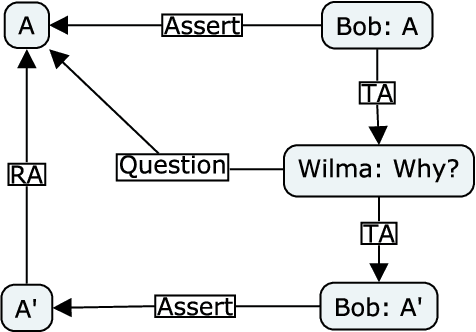
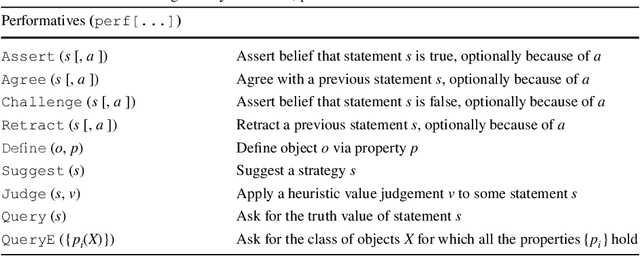
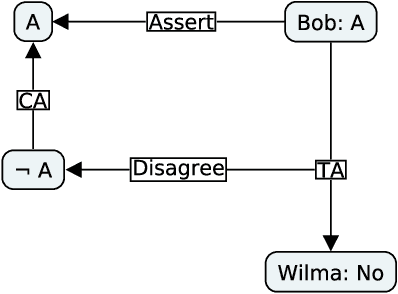
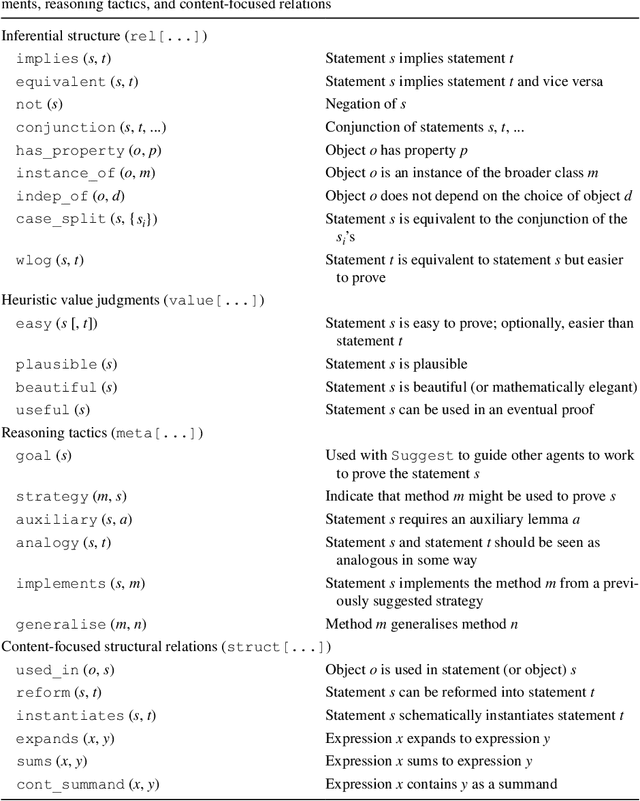
Abstract:To adequately model mathematical arguments the analyst must be able to represent the mathematical objects under discussion and the relationships between them, as well as inferences drawn about these objects and relationships as the discourse unfolds. We introduce a framework with these properties, which has been used to analyse mathematical dialogues and expository texts. The framework can recover salient elements of discourse at, and within, the sentence level, as well as the way mathematical content connects to form larger argumentative structures. We show how the framework might be used to support computational reasoning, and argue that it provides a more natural way to examine the process of proving theorems than do Lamport's structured proofs.
Modelling serendipity in a computational context
May 16, 2017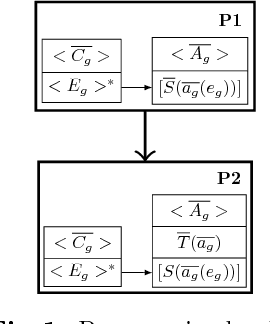
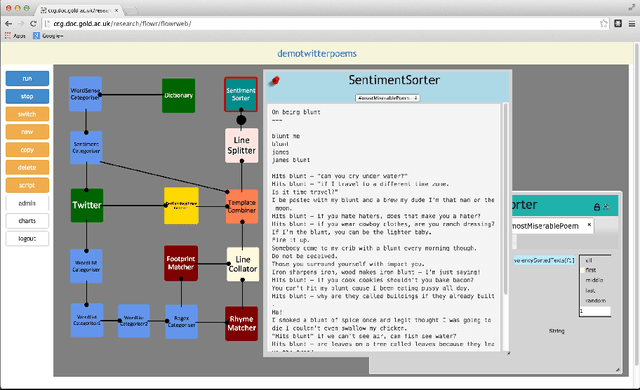
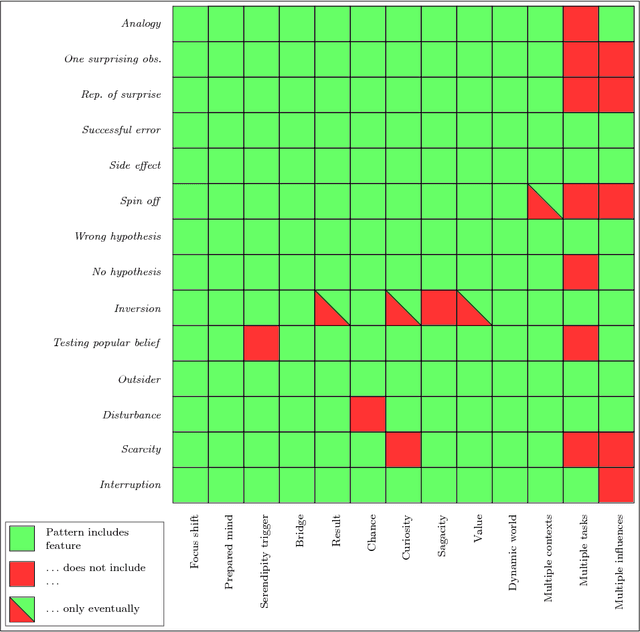
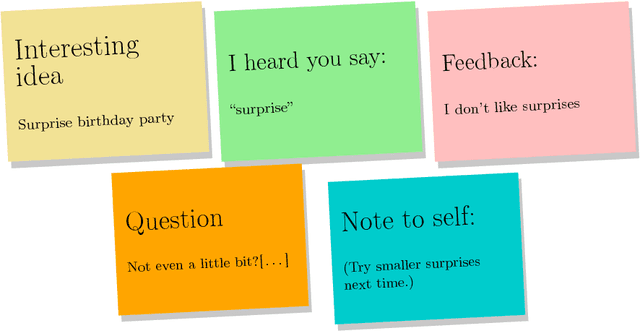
Abstract:Building on a survey of previous theories of serendipity and creativity, we advance a sequential model of serendipitous occurrences. We distinguish between serendipity as a service and serendipity in the system itself, clarify the role of invention and discovery, and provide a measure for the serendipity potential of a system. While a system can arguably not be guaranteed to be serendipitous, it can have a high potential for serendipity. Practitioners can use these theoretical tools to evaluate a computational system's potential for unexpected behaviour that may have a beneficial outcome. In addition to a qualitative features of serendipity potential, the model also includes quantitative ratings that can guide development work. We show how the model is used in three case studies of existing and hypothetical systems, in the context of evolutionary computing, automated programming, and (next-generation) recommender systems. From this analysis, we extract recommendations for practitioners working with computational serendipity, and outline future directions for research.
Automating change of representation for proofs in discrete mathematics
May 10, 2015


Abstract:Representation determines how we can reason about a specific problem. Sometimes one representation helps us find a proof more easily than others. Most current automated reasoning tools focus on reasoning within one representation. There is, therefore, a need for the development of better tools to mechanise and automate formal and logically sound changes of representation. In this paper we look at examples of representational transformations in discrete mathematics, and show how we have used Isabelle's Transfer tool to automate the use of these transformations in proofs. We give a brief overview of a general theory of transformations that we consider appropriate for thinking about the matter, and we explain how it relates to the Transfer package. We show our progress towards developing a general tactic that incorporates the automatic search for representation within the proving process.
Discovery of Invariants through Automated Theory Formation
Jun 21, 2011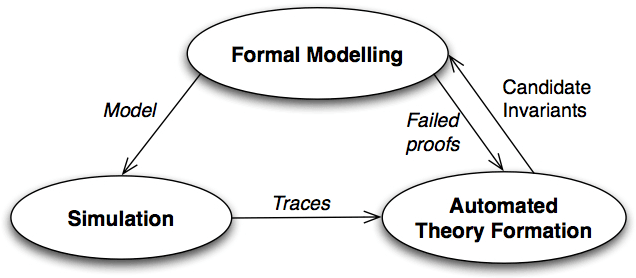
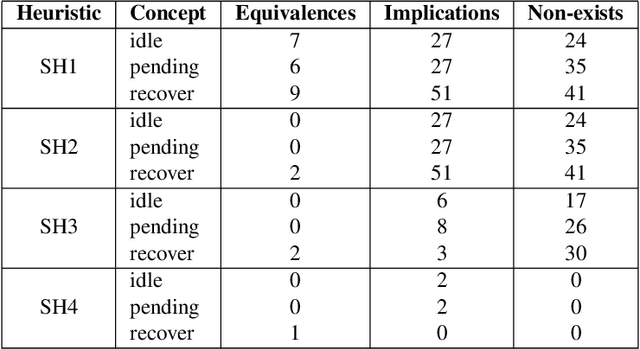
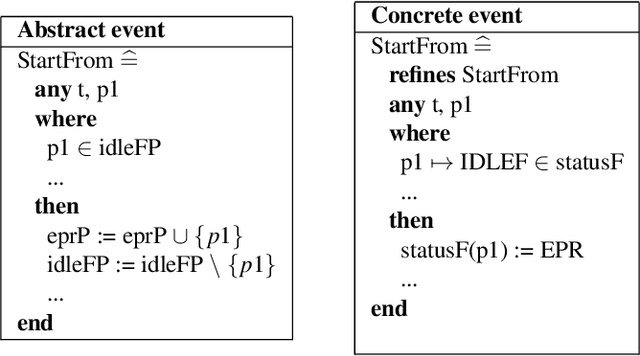
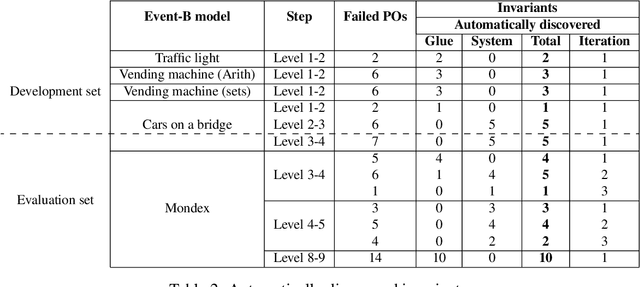
Abstract:Refinement is a powerful mechanism for mastering the complexities that arise when formally modelling systems. Refinement also brings with it additional proof obligations -- requiring a developer to discover properties relating to their design decisions. With the goal of reducing this burden, we have investigated how a general purpose theory formation tool, HR, can be used to automate the discovery of such properties within the context of Event-B. Here we develop a heuristic approach to the automatic discovery of invariants and report upon a series of experiments that we undertook in order to evaluate our approach. The set of heuristics developed provides systematic guidance in tailoring HR for a given Event-B development. These heuristics are based upon proof-failure analysis, and have given rise to some promising results.
* In Proceedings Refine 2011, arXiv:1106.3488
 Add to Chrome
Add to Chrome Add to Firefox
Add to Firefox Add to Edge
Add to Edge